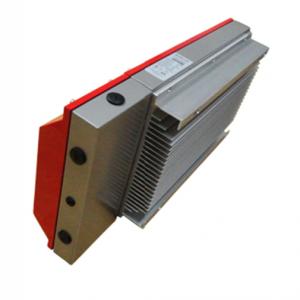Mppt Inverter Solar
Mppt Inverter Solar Related Searches
Home Power Inverter For Solar Best Inverter For Solar Mppt Inverter For Solar System Inverter For Home Solar Solar Power Inverter For Rv Shade For Solar Inverter App For Solar Inverter Capacitor For Solar Inverter Ct For Solar Inverter Inverter For Rv SolarHot Searches
Type Of Inverter For Solar Types Of Inverter For Solar Used Solar Inverter For Sale Inverter Size For Solar System Solar Edge Inverter For Sale 5kw Solar Inverter For Sale Solar Inverter For Sale Solar Inverter For Battery Solar Inverter For Split Ac Solar Inverter For Laptop Solar Inverter For Fridge Solar With Inverter Price Solar Inverter With 2 Battery Solar Inverter With Ac Outlet Solar Inverter Price In China Best Solar Inverter In China Solar Inverter Price In Dubai Solar Inverter Price In Uae Solar Inverter Price In Kenya Type Of Inverter For SolarMppt Inverter Solar Supplier & Manufacturer from China
Okorder.com is a professional Mppt Inverter Solar supplier & manufacturer, offers integrated one-stop services including real-time quoting and online cargo tracking. We are funded by CNBM Group, a Fortune 500 enterprise and the largest Mppt Inverter Solar firm in China.Hot Products
FAQ
- What is the difference between low voltage grid connection and medium voltage grid connection?
- When the power grid failure or disturbance caused by the power supply and network voltage drop, in the voltage drop range, the power group can be uninterrupted through the inverter and network operation.
- A solar inverter can handle variations in solar panel cleanliness by continuously monitoring the output power and adjusting the operating parameters accordingly. If the panels are dirty, the inverter will detect a decrease in the output power and adjust the voltage and current to maintain optimal performance. However, if the panels are excessively dirty, it can significantly impact the overall energy production and may require manual cleaning to ensure maximum efficiency.
- Is the PV inverter a current source or a voltage source?
- The inverter is mainly composed of a switching element such as a transistor, and turns the DC input into an AC output by repeatedly turning ON-OFF the switching element in a regular manner.
- Yes, a solar inverter can be used with a solar-powered security camera system. A solar inverter is responsible for converting the direct current (DC) produced by the solar panels into alternating current (AC) that can be used to power electrical devices. In the case of a solar-powered security camera system, the solar panels generate DC power, which is then converted by the solar inverter into AC power that can be used to operate the cameras and other components of the system.
- The temperature can significantly affect the performance of a solar inverter. As the temperature increases, the efficiency of the inverter decreases. This is because the internal components of the inverter can overheat, leading to a decrease in power conversion efficiency. Additionally, high temperatures can also cause voltage drops and create thermal stress on the components, which can further impact the performance and longevity of the inverter. Therefore, it is crucial to consider temperature management and cooling mechanisms to ensure optimal performance and reliability of a solar inverter.
- Yes, a solar inverter can be used with solar trackers. Solar trackers are designed to move solar panels throughout the day to optimize their exposure to the sun. The inverter is responsible for converting the DC electricity generated by the solar panels into AC electricity that can be used to power various appliances and devices. Therefore, the inverter is an essential component in any solar power system, including those with solar trackers.
- The role of a solar inverter in optimizing energy production is to convert the direct current (DC) electricity generated by solar panels into alternating current (AC) electricity that can be used to power homes and businesses. In addition to this basic function, a solar inverter also plays a crucial role in maximizing energy production by efficiently managing the flow of electricity, ensuring that the solar system is operating at its highest capacity, and adapting to changes in sunlight intensity to achieve optimal energy output.
- Yes, there are specific installation requirements for solar inverters. Here are some key considerations: 1. Location: Solar inverters should be installed in a well-ventilated area, away from direct sunlight or any potential sources of heat. They should also be placed in a clean and dry environment to ensure optimal performance and longevity. 2. Mounting: Inverters can be mounted on walls or placed on flat surfaces, but it is important to follow the manufacturer's guidelines for proper mounting techniques and ensure that they are securely fastened. 3. Wiring: Adequate wiring is essential for connecting the solar panels to the inverter and the inverter to the electrical grid. The wiring should be properly sized, based on the system's specifications, to handle the voltage and current requirements without any voltage drop or overheating. 4. Electrical connections: The inverter should be connected to a dedicated circuit breaker or fuse in the main electrical panel. This circuit breaker or fuse should be properly sized to protect the inverter and the electrical system from any potential hazards. 5. Clearances: Solar inverters require specific clearances to ensure proper ventilation and prevent overheating. The manufacturer's guidelines should be followed to determine the necessary clearances around the inverter. 6. Monitoring and safety devices: Some inverters require additional monitoring and safety devices, such as surge protectors, arc fault circuit interrupters (AFCIs), or rapid shutdown devices. These devices should be installed according to the manufacturer's instructions and local electrical codes. 7. Compliance with regulations: It is crucial to comply with local electrical codes and regulations when installing solar inverters. This may include obtaining necessary permits and inspections to ensure a safe and compliant installation. It is recommended to consult with a professional solar installer or electrician who is knowledgeable about solar inverter installations to ensure that all the specific requirements are met for your particular system.









































